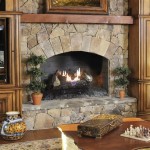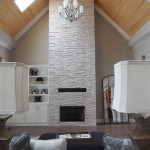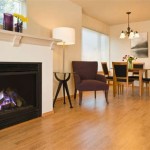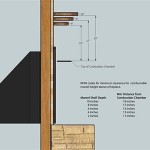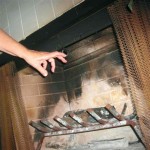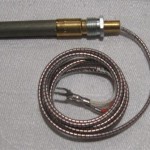Building Regulations Fireplace Hearth
A fireplace hearth is a crucial element of a solid fuel burning appliance installation. It is a non-combustible area that protects the floor and surrounding building materials from heat and sparks. Building regulations mandate specific requirements for hearths to ensure safety and prevent fire hazards. Adherence to these regulations is not merely a formality; it is a legal obligation and a fundamental aspect of responsible home construction and renovation.
This article details essential aspects of building regulations pertaining to fireplace hearths. It covers the purpose of a hearth, the different types of hearths, the required dimensions and materials, and the factors influencing these specifications. Understanding and complying with these regulations is essential for architects, builders, homeowners, and anyone involved in installing or modifying a fireplace.
Purpose of a Fireplace Hearth
The primary purpose of a fireplace hearth is to provide a fire-resistant barrier between the fire and the combustible materials of the building structure, primarily the floor. A fire within a fireplace can generate significant radiant heat, hot embers, and sparks. Without a properly constructed hearth, these elements can readily ignite nearby carpets, wood flooring, or other flammable items, leading to a potentially devastating fire.
Beyond fire protection, the hearth also serves to contain any spills or debris from the fireplace. Ash, soot, or fallen logs can be easily cleaned from a non-combustible hearth, preventing damage to the underlying floor or surrounding areas. The hearth also provides a stable and level surface for the fireplace appliance itself, ensuring its proper function and stability.
The effectiveness of the hearth hinges on its material properties, dimensions, and construction. Building regulations are designed to ensure that the hearth provides adequate protection against the specific risks associated with solid fuel burning appliances. These regulations consider the type of appliance (e.g., open fire, stove), the fuel used (e.g., wood, coal), and the heat output of the appliance.
Types of Fireplace Hearths
Fireplace hearths are generally classified into two main types: constructional hearths and superimposed hearths. The distinction lies in their structural integration with the building and their ability to provide fire resistance.
Constructional Hearth: This type of hearth forms part of the structural floor of the building. It is typically made of concrete or other non-combustible material and is built integrally with the surrounding floor. A constructional hearth is designed to provide fire resistance for the entire floor assembly, preventing fire from spreading to other parts of the building. Building regulations often require a constructional hearth when the existing floor does not possess adequate fire resistance.
Superimposed Hearth: This type of hearth is laid on top of the existing floor. It consists of a layer of non-combustible material, such as stone, tile, or concrete, placed directly on the floor surface. While a superimposed hearth provides protection against sparks and embers, it does not necessarily enhance the fire resistance of the underlying floor structure. This type of hearth is suitable when the existing floor already has sufficient fire resistance or when the appliance has a low heat output.
The choice between a constructional and superimposed hearth depends on the specific building regulations, the type of appliance, and the existing floor construction. Consulting with a building control officer is crucial to determine the appropriate type of hearth for a given installation.
Dimensions and Materials Requirements
Building regulations specify minimum dimensions for fireplace hearths to ensure sufficient protection against fire hazards. These dimensions vary based on the type of appliance and its proximity to combustible materials. Generally, the hearth must extend beyond the appliance in all directions to catch sparks and embers that may escape.
For open fires, the hearth typically needs to extend at least 500mm to the front of the fire opening and at least 300mm to each side. For stoves, the required dimensions may be less stringent, depending on the appliance's design and heat output. However, it is essential to consult the manufacturer's instructions and building regulations for the specific requirements. The regulations often stipulate a minimum thickness for the hearth material to provide adequate insulation and fire resistance.
The materials used for fireplace hearths must be non-combustible and capable of withstanding high temperatures. Acceptable materials include concrete, stone, brick, ceramic tiles, and other approved fire-resistant materials. The surface of the hearth should be smooth and easily cleaned to prevent the accumulation of flammable debris. The use of combustible materials, such as wood or carpet, on the hearth is strictly prohibited.
Specific material performance standards are often referenced in building regulations. These standards define the required fire resistance, thermal conductivity, and other properties of the hearth material. Compliance with these standards is crucial to ensure that the hearth provides adequate protection against fire hazards.
In addition to the main hearth area, building regulations may also require a "constructional apron" or "upstand" around the perimeter of the hearth. This apron is a raised edge that helps to contain spills and prevent embers from rolling off the hearth. The apron should be made of non-combustible material and securely attached to the hearth.
Furthermore, any surrounding walls or combustible materials in close proximity to the fireplace may require additional fire protection measures. This may include the installation of fire-resistant wall coverings or the creation of a non-combustible zone around the fireplace opening. The specific requirements depend on the distance between the fireplace and the combustible materials.
Factors Influencing Hearth Specifications
Several factors influence the specific requirements for fireplace hearths, including the type of appliance, the fuel used, the heat output, and the building's construction. Understanding these factors is essential for selecting the appropriate hearth design and materials.
Type of Appliance: Open fires generally require larger hearths with greater fire resistance compared to stoves. Stoves are often enclosed appliances that generate less radiant heat and fewer sparks, allowing for smaller hearth dimensions and potentially less stringent material requirements. Gas fireplaces, depending on their design, may have different requirements than solid fuel appliances.
Fuel Used: Different fuels burn at different temperatures and produce varying amounts of sparks and embers. Wood and coal, for example, can generate more sparks and embers than manufactured logs. The type of fuel used will influence the required dimensions and material properties of the hearth.
Heat Output: Appliances with higher heat outputs require hearths with greater fire resistance and potentially larger dimensions. The higher the heat output, the greater the risk of ignition of nearby combustible materials. The manufacturer's specifications for the appliance typically provide information on the required hearth dimensions and materials.
Building Construction: The construction of the surrounding walls and floor also influences the hearth requirements. If the floor is made of combustible materials, such as wood, a constructional hearth may be required to provide adequate fire resistance. Similarly, if the walls are made of combustible materials, additional fire protection measures may be necessary. Older buildings may have different construction techniques that necessitate a different approach to hearth design and installation.
Existing Fireplace Openings: When retrofitting a new appliance into an existing fireplace opening, the existing hearth must be assessed for compliance with current building regulations. If the existing hearth does not meet the current requirements, it may need to be replaced or modified to provide adequate fire protection. The size and construction of the existing opening might impose limitations on the type of appliance that can be installed.
The location of the appliance within the room can also have an impact. A fireplace situated in a corner may necessitate different hearth dimensions compared to one located along a straight wall. The proximity of furniture and other combustible items must be considered when determining the hearth's dimensions.
Ultimately, consulting with a qualified building control officer or a certified fireplace installer is crucial to ensure compliance with building regulations and to select the appropriate hearth design and materials for a specific installation. Ignoring these regulations can result in significant safety risks and potential legal repercussions.
It is essential to maintain records of the hearth installation, including product specifications and building control approvals. These records can be useful for future inspections or insurance claims.

Hearth Regulations Size Thickness Requirements Me And My Glass

Stove Hearth Size And Thickness Stoves

Hearth Marking Hetas
Hearth Clearances Diynot Forums

Fireplace Hearth Extension Rules Structure Tech Home Inspections
Part 3 7 Heating Appliances Ncc

The Log Burner Hearth Regulations To Know Direct Stoves

Is My Fireplace Large Enough Recess Size Diagram

Hearth Sizes And Regulations For A Wood Burning Stove Stovefitter S Warehouse

Wood Heater Hearth Clearance Dimensions Barbeques Galore


